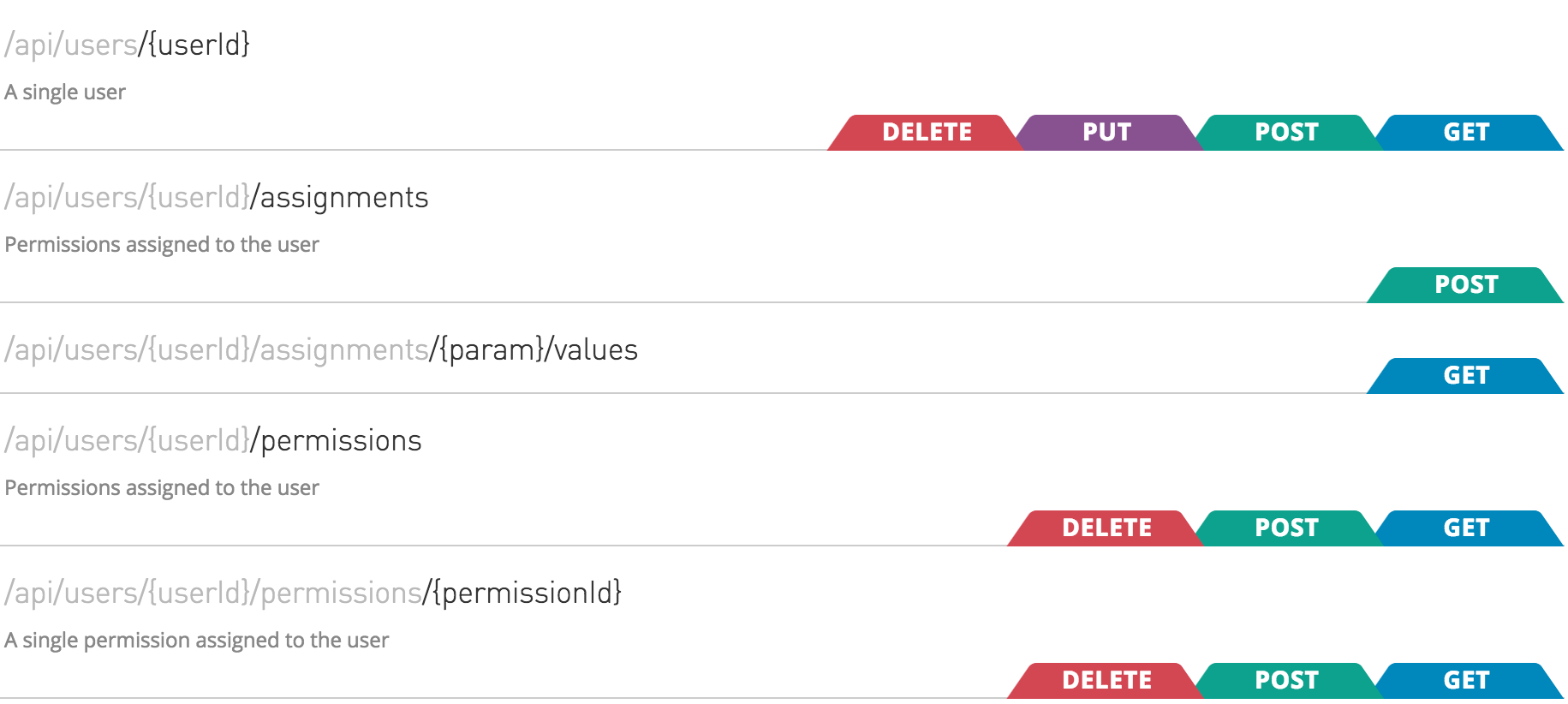
Resource Level Policy Reference
This reference covers applying policies to resources and methods using an example API. The simulation of the example API appears as follows:

A resource level policy supports Java regular expressions. For example, you can use the wildcard to apply a policy to multiple resources. When you apply the policy to the API, specify the resources to which it applies.

You can apply multiple conditions to filter your resources and methods. The URI template regex can be applied to one, many, or all the methods that your API has.
Do not use a placeholder, such as {userId}, in the regular expression. Using a placeholder in an expression fails because the placeholder does not match the actual node. In the case of the example placeholder {userId}, the node actually looks something like this:
/api/users/671962fc-f076-4b19-bc38-45ba3a4e4095/permissions/1234
-
671962fc-f076-4b19-bc38-45ba3a4e4095 is the user ID
-
1234 is the ID of a permission
To apply a policy to resource /api/users/{userId} that represents a single user and all nodes below the resource, use the following expression:
/api/users/.*
To apply a policy to only the permissions resources /api/users/{userId}/permissions and /api/users/{userId}/permissions/{permissionId}, use the following expression:
/api/users/.*/permissions.*
Securing a Subset of the API
You can add security to create, update, and delete operations, leaving read-only operations unsecured. For example, you want to apply an HTTP basic authentication policy to specific methods and resources. Select POST, PUT, PATCH and DELETE methods and use the following expression to cover every resource URI of the API:
.*
This expression enforces security on write operations, leaving GET (read-only) unsecured. Use a more specific expression to covering just a subset of the resources.
Setting Different Limits on Resources
You can enforce rate limiting to user-specific operations with different limits depending on the user action. You can apply rate limiting, for example, multiple times, limiting requests to a greater extent for some resources than others. For example, you can set different limits for read, create, and delete operations per user on the following nodes:
/api/users/.*/.* →
/api/users/{userId}/assignments;
/api/users/{userId}/assignments/{param}/values;
/api/users/{userId}/permissions;
/api/users/{userId}/permissions/{permissionId}
First, you apply a rate limiting policy to specific methods and resources, selecting the GET (read) method and using the following regular expression:
/api/users/.*/.*
You then configure the policy to limit requests to 100 requests per 1 hour, for example.
Next, you apply the rate limiting policy to specific methods and resources again, but selecting the POST (create) method and using the same regular expression as before. Configure 50 requests per 1 hour.
Finally, you can apply the rate limiting policy again to specific methods and resources, selecting the DELETE method. This time, you use and the same regular expression as before. For example, you can configure 25 requests per 2 hours.



